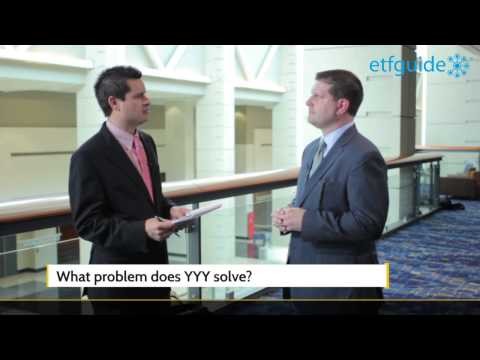HighYielding PIMCO ClosedEnd Funds to Sell Immediately
Post on: 4 Июль, 2015 No Comment

With approximately $230 billion in assets, the PIMCO Total Return Fund (PTTAX ) is the largest bond mutual fund in the world.
But it’s faltering…
The fund has seen 13 consecutive months of outflows, and has lost a total of nearly $60 billion in assets under management since April 2013.
A combination of fears about rising interest rates and uncertainty regarding PIMCO’s future (Co-CIO Mohamed El-Erian announced his departure in January 2014 and left in March 2014) have undoubtedly contributed to the outflows.
Forget the Total Return Fund, though. Investors in two other PIMCO funds should be heading for the exits, instead.
But they’re not… just yet.
The funds I’m referring to aren’t mutual funds, they’re closed-end funds (CEFs).
CEF Strong “Sell” #1: A Blended Fund
The PIMCO Global StocksPLUS & Income Fund (PGP ) has exposure to both equities and debt, and utilizes leverage and derivatives to boost returns and payouts.
PGP has a 14.7% distribution rate, and that has certainly contributed to the fund’s allure.
Indeed, the fund trades at a ludicrous 66% premium to net asset value (NAV). This is the highest premium of any closed-end fund I can find.
Now, I’m not willing to pay $25.24 for something with an underlying value of $15.16, but apparently the yield hogs disagree with me.
The fund’s huge premium knocks its yield down to 8.9% based on its market price.
Granted, the fund has had a persistently high premium to NAV since 2009. But it’s a “Sell” either way…
As you can see in the following chart, PGP has produced a total return (dividends reinvested) of 64% since 2011. It’s not your typical dividend reinvestment type of fund, but the results are interesting.
That’s because it’s produced a virtually identical total return to that of the non-levered and lower-yielding SPDR S&P 500 ETF Trust (SPY ) over this time period.
But the volatility should really jump out at you. Notice that PGP periodically goes into free fall. In late 2012, the fund lost over 30% of its value in less than two months.
This volatility means that its risk-adjusted returns are less than stellar.
To assess the reward per unit of risk, I’ll use the Sharpe ratio. The five-year Sharpe ratios for PGP and SPY are 1.2 and 1.3, respectively. A higher number is better, all else equal.
So, PGP’s returns might look impressive on the surface, but SPY a passive index ETF has actually provided a more favorable risk-reward.
Compounding the problem is PGP’s high expense ratio of 1.94% (including interest expense).
Put it all together and you have a fund that doesn’t belong in our portfolios.
PGP only has assets of around $250 million, but there’s a bigger PIMCO fund that investors should be wary of…
CEF Strong “Sell” #2: A High-Income Fund
The PIMCO High Income Fund (PHK ) is much larger than PGP, with approximately $1.8 billion in assets.
This fund is managed by PIMCO chief Bill Gross, who is often referred to as the “Bond King” although perhaps the crown has slipped a bit.
This leveraged fund also has a high yield (11.1% based on market price) and a sky-high premium to NAV (57%).
Its a fixed-income fund, so let’s compare its risk-reward ratio with that of a high-yield ETF, the iShares iBoxx High Yield Corporate Bond ETF (HYG ).
PHK’s five-year Sharpe ratio is 1.21, compared with HYG’s 1.35.
Once again, the PIMCO fund has a less favorable historical risk-reward ratio than a basic ETF.
So, just like PGP, it’s a “Sell.”
The Bond King Buys Discounts
Now, Bill Gross himself has a history of buying CEFs at a discount to NAV in his personal account (and his relatives accounts).
According to SEC filings, Gross was adding to his stake in the PIMCO Dynamic Income Fund (PDI ) in March.
At the time, the fund was trading at around a 5% discount to NAV. That discount has now vanished, and PDI trades at a slight premium to its NAV.
Gross’ latest purchase on June 13 was the PIMCO Dynamic Credit Income Fund (PCI ), which trades at a 4.6% discount to NAV.
Indeed, Gross’ purchases validate a strategy I’ve been advocating: Invest in CEFs trading at discounts to NAV .
But, for the record, I prefer the DoubleLine Income Solutions Fund (DSL ) to these PIMCO funds.
If you’d like to search for closed-end funds yourself, CEF Connect is a great resource for fund details, and it also has a useful screener.
Bottom line: Levered closed-end funds trading at significant premiums to net asset value are among the most dangerous securities you can own right now especially those that have displayed a poor risk-reward relationship during this epic bull market in risk assets.
Safe (and high-yield) investing,
Alan Gula, CFA
As Wall Street Daily’s Chief Income Analyst, Alan is continually and fervently analyzing the financial markets. He draws upon a wide range of finance experience, including investment banking, research and trading. Learn More >>














